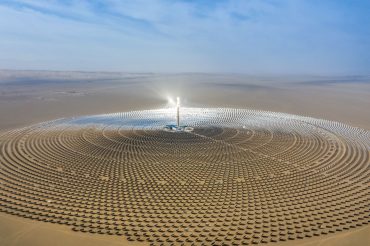
- Green Tech
Iceland Opens First Near Carbon-Neutral Geothermal Power Plant
6 minute read

Geothermal power plant in Iceland captures 34,000 tons of CO2 annually while maintaining full energy production capacity
Three Key Facts
- Iceland launches world’s first near carbon-neutral geothermal plant with the Steingerði air purification facility at Hellisheidi, targeting 95% reduction in greenhouse gas emissions including 30,000 tonnes of CO2 annually.
- €3.87 million EU Innovation Fund backing supports the Silfurberg project, demonstrating large-scale carbon capture and permanent storage technology that converts CO2 into solid rock within two years.
- Mammoth direct air capture plant opens with 36,000 tonnes annual CO2 removal capacity, establishing Hellisheidi as a global hub for emissions removal technology alongside existing facilities.
Introduction
Iceland achieves a breakthrough in clean energy with the launch of the Steingerði air purification plant at the Hellisheidi geothermal facility, positioning it to become the world’s first near carbon-neutral geothermal power plant. The facility targets a 95% reduction in greenhouse gas emissions through advanced carbon capture and permanent storage technology.
The project represents a significant milestone in geothermal energy development, addressing environmental concerns while maintaining electricity and heat production for Reykjavik and surrounding industrial operations. This integration of carbon removal with renewable energy generation establishes a new standard for clean power generation globally.
Key Developments
The Steingerði facility operates as part of the Silfurberg project, backed by €3.87 million from the European Union’s Innovation Fund. Carbfix leads the initiative alongside Orka náttúrunnar, a subsidiary of Orkuveita Reykjavíkur, and ON Power to demonstrate large-scale carbon dioxide capture and permanent storage.
The technology captures CO2 and hydrogen sulfide emissions directly from the geothermal steam cycle, dissolving them in water before injection underground. The captured emissions mineralize into solid rock within two years, providing permanent storage rather than temporary sequestration.
Minister of the Environment, Energy, and Climate Jóhann Páll Jóhannsson inaugurated the facility, emphasizing its role in Iceland’s climate strategy. The project aligns with Iceland’s 2030 Climate Action Plan, contributing approximately 10% toward the nation’s goal of 55% emissions reduction by 2030.
Market Impact
The Hellisheidi plant, with capacity of 303 MW electricity and 200 MW thermal, currently emits about 40,000 metric tons of CO2 annually. The upgraded system captures 85% of CO2 emissions, approximately 34,000 tons per year, alongside nearly all hydrogen sulfide emissions.
The project opens new revenue streams through potential carbon credits and international collaboration opportunities. The financial model combines public funding with operational synergies, creating a template for similar ventures in the renewable energy sector.
According to ThinkGeoEnergy, the clustering of direct air capture projects at Hellisheidi reinforces its position as a global center for emissions removal technology, attracting substantial investment in the carbon removal sector.
Strategic Insights
The integration demonstrates how existing renewable energy infrastructure can incorporate carbon removal technology without compromising power generation. This model addresses the dual challenge of maintaining energy security while achieving aggressive decarbonization targets.
The project leverages Iceland’s natural advantages in geothermal energy and basalt rock formations, which facilitate the mineralization process. This geographic specificity raises questions about global scalability while establishing Iceland as a leader in climate technology exports.
The simultaneous operation of multiple carbon removal facilities at one site creates operational efficiencies and shared infrastructure benefits. This clustering approach may become the standard for future large-scale carbon removal deployments.
Expert Opinions and Data
Árni Hrannar Haraldsson, Managing Director of Orka náttúrunnar, states that “ON’s goal has always been to produce hot water and electricity responsibly. Steingerður is a major milestone on that journey, and we are proud that Hellisheidi Power Plant will become one of the first geothermal power plants in the world to become nearly carbon-neutral.”
Edda Sif Pind Aradóttir, CEO of Carbfix, notes that “Silfurberg marks an important step in the increased use of Carbfix’s proven technology, while laying the foundation for more projects based on a common European regulatory framework.” The technology has been independently verified by DNV, providing credibility for potential scaling efforts.
The facility operates alongside Climeworks’ Mammoth plant, which captures 36,000 tonnes of CO2 annually from ambient air. Climeworks aims to reach 1 billion tonnes of CO2 capture annually by 2050, requiring significant technology scaling and deployment of numerous facilities globally.
Conclusion
The Steingerði launch establishes a new benchmark for integrating carbon removal with renewable energy generation, demonstrating technical and financial viability at industrial scale. The project creates a replicable model for public-private collaboration in climate technology development.
Iceland solidifies its position as a global leader in carbon removal technology through the concentration of multiple facilities at Hellisheidi. The success of this integration will influence future investments in similar projects worldwide, particularly in regions with suitable geological conditions and renewable energy resources.








